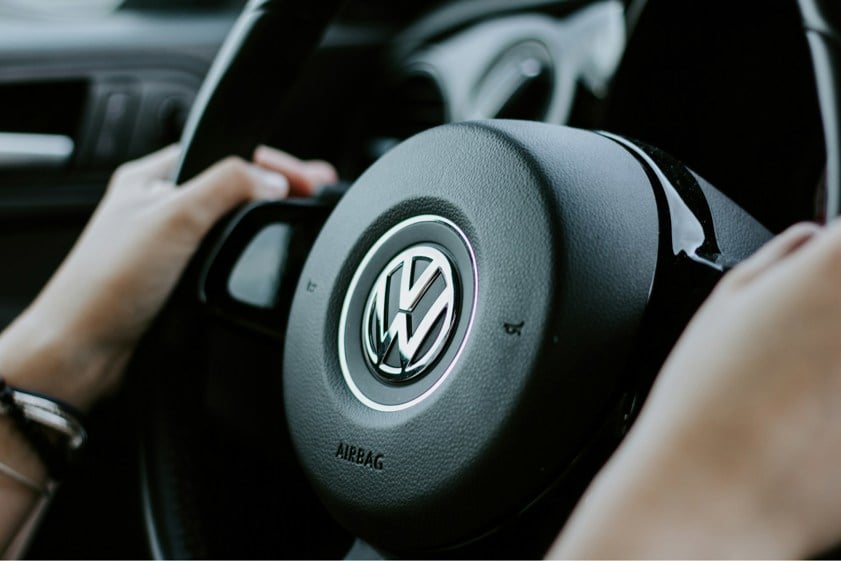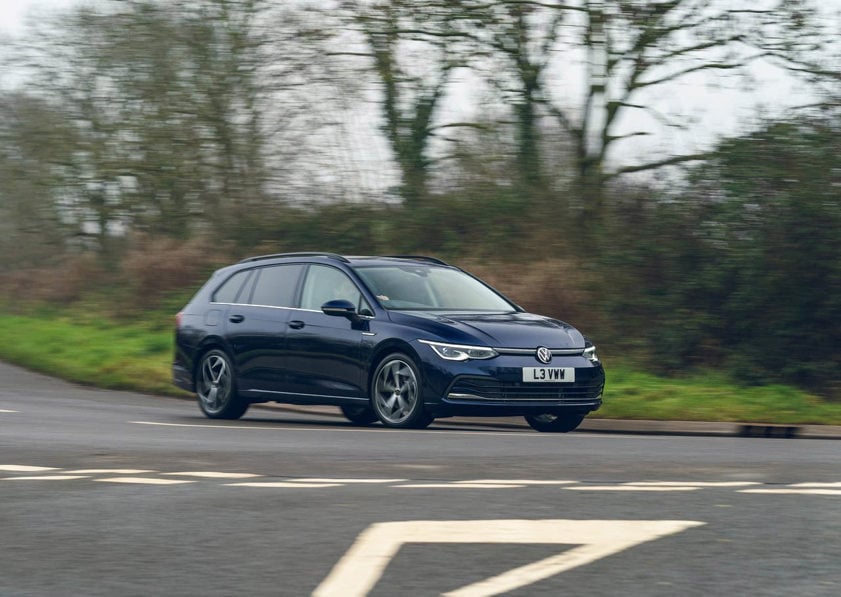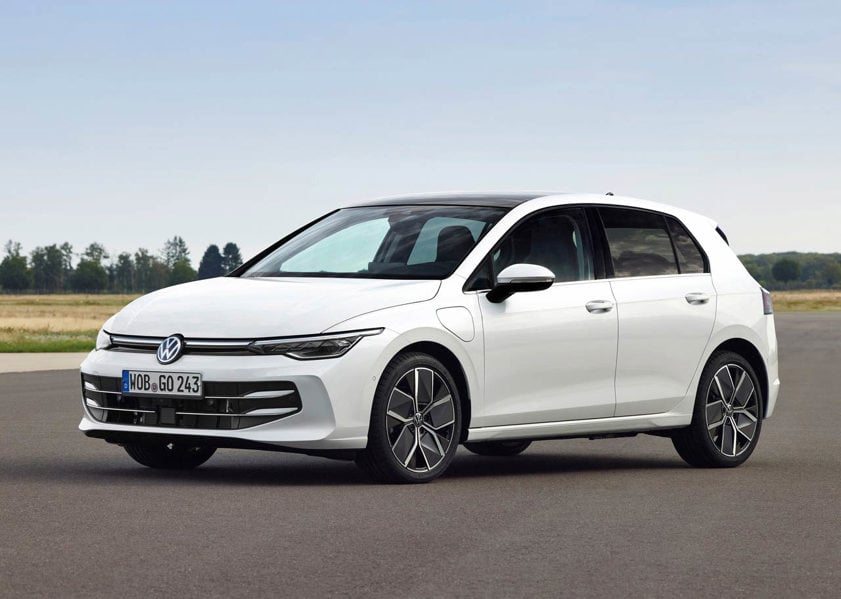
The Volkswagen Golf is one of the UK's most trusted all-rounders of all time, with a reported 37 million units sold since its introduction in 1974.
However, when it comes to choosing between the Golf Estate and Hatchback, drivers often find themselves stuck. It's more than a matter of size; it's about aligning the car with your lifestyle, driving preferences, and aesthetics.
In this blog, we'll break down the differences, share expert opinion, and find the best Golf to fit your lifestyle. We talk about:
Feature | Golf Hatchback | Golf Estate |
|---|---|---|
Boot space | 380 litres | 600 litres |
Fuel economy | c. 52mpg | c. 53mpg |
Engines | Petrol or plug-in hybrid | Petrol, diesel, mild-hybrids |
Lease cost | Lower monthly costs | Slightly higher but still great value |
Best for | City drivers and couples | Families and outdoor lifestyles |

Volkswagen Golf Estate
Design:
With its elongated profile and pronounced rear end, the Golf Estate has a sleek and practical design.
The extra bodywork adds a touch of executive elegance while also ensuring greater storage capacity. It does lean more towards function, but still retains sharp, modern lines.
Cabin:
Both models share the same refined dashboard and material quality. You'll get a minimalist cabin with responsive controls and comfortable seats, which is handy for those long-haul adventures.
Pro tip: The Golf Estate offers that extra boot space without the bulk of an SUV. It's a smart lease choice for families after space, comfort, and understated style.
Check out our Family Leasing Hub for all you need to know about family driving.
Space and practicality:
Boot capacity is where the estate really shines, offering 611 litres of space, which is more than enough for golf clubs, holiday luggage, or even DIY runs.
There's also plenty of rear legroom, making it a comfortable cruiser for families or tall passengers.
Driving feel:
The estate is smooth and settled on motorways, but is slightly less engaging at lower speeds due to its longer wheelbase.
Around town, it's comfortable and easy to drive, but be aware of the larger dimensions when parking.
Fuel economy:
Fuel efficiency is strong across the Estate engine range, with the 2.0-litre diesel engine returning up to 65mpg. For the petrol and mild-hybrid options, you'll be looking around 50mpg.
Pro tip: If your weekly routine involves long commutes or regular motorway miles, the Estate’s relaxed drive and excellent fuel economy make it a great choice for stress-free, cost-effective travel.
Combine this with the information in our fuel economy guide, and you'll make significant savings.

Volkswagen Golf Hatchback
Design and aesthetics:
The Golf Hatchback is shorter, sportier, and more agile in its proportions than the Estate, making it perfect for city drivers.
It's got the same sharp lines and core features as the Estate, but wraps it all up in a more compact package.
Cabin:
The cabin for the Hatchback is identical to the Estate, with intuitive controls and a clean dashboard. The most recent version, the eighth generation, features a 12-inch infotainment system, ambient lighting, and a leather-wrapped steering wheel.
“With features like ambient lighting and a large infotainment screen now standard, the Golf Hatchback feels like a premium car in a smaller body. ”

Space and practicality:
The hatchback still offers a respectable 380 litres of boot space, which is more than enough for city drivers or couples.
The rear is also one of the most spacious around for a hatchback. Children will be able to fit easily, and while adults may feel a bit tight, it's of no concern.
Driving feel:
More agile and nimble, the Hatchback handles urban roads effortlessly. Its lighter frame and tighter turning circle make it easier to zip through city traffic and park.
Fuel economy:
Economy figures for the Hatchback petrol engines are nearly identical to the Estate. However, it stands out with its plug-in hybrid powertrain, which offers up to 89 miles of electric-only range, perfect for short trips.
Pro tip: If you're spending most of your time navigating city streets or popping to the shops, the Golf Hatchback is built for the job. Pair it with a plug-in hybrid, and you could do your daily commute without touching a drop of petrol.
Unsure what a plug-in hybrid is? We explain all in our guide to hybrid cars.
Golf Estate | Golf Hatchback | |
|---|---|---|
Pros | - Agile and fun to drive | - Spacious boot (611L) |
Cons | - Smaller boot | - Bulkier design |
Choosing between the Golf Hatchback and Estate comes down to your lifestyle and how much space you need.
- Go for the Hatchback if you want a cost-effective, reliable, and stylish compact car for everyday use.
- Choose the Estate if you need maximum practicality, a bigger boot, or regularly carry passengers and gear.
Both models come with Volkswagen’s excellent tech and comfort features, making them top choices for lease customers across the board.
Ready to find your ideal Volkswagen Golf? Our leasing consultants are happy to guide you through the latest deals and find a model that fits your needs and budget.
Originally posted: 21st February 2024
Last updated: 3rd September 2025
Due to be reviewed: 6th May 2025

